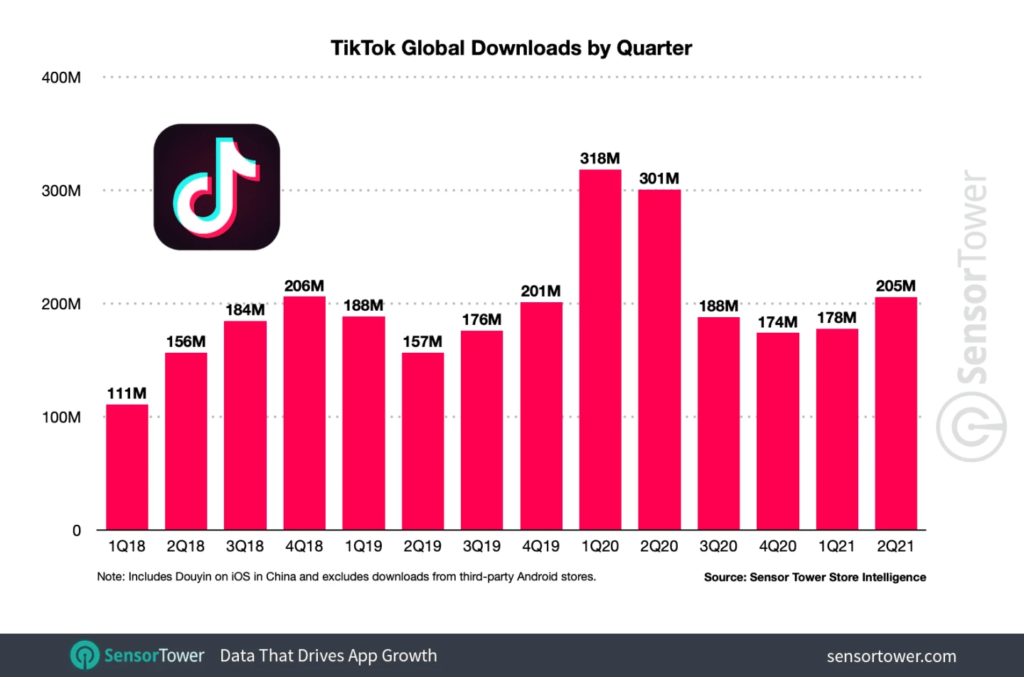
In the ever-changing landscape of digital marketing, keeping up to date with the latest trends is crucial for businesses aiming to connect effectively with their target audiences. One area that has seen tremendous growth and innovation is mobile marketing. As smartphones and mobile devices dominate our daily lives, understanding and leveraging mobile marketing trends becomes paramount for success in today’s competitive landscape.
In this blog post, we delve into the domain of “Mobile marketing trends,” exploring key developments, strategies, and insights that can empower businesses to harness the full potential of mobile platforms in their marketing endeavors. From mobile-commerce to augmented reality, voice search optimization to influencer marketing, we uncover the evolving landscape of mobile marketing and provide actionable insights for navigating this dynamic terrain.
So, let’s get started:
Definition of Mobile Marketing
Mobile marketing refers to the strategic use Of mobile devices such as smartphones and tablets, which are mobile in nature, to connect and engage with target audiences for marketing purposes.
Significance of Mobile Marketing In The Current Digital Environment
- The ubiquity of Mobile Devices: With the increasing prevalence of smartphones and the ever-growing number of mobile internet users, mobile devices have become an integral part of people’s daily lives. From browsing the web to social media interaction and online shopping, mobile devices are central to how individuals access and engage with digital content.
- Shift in Consumer Behavior: Consumers today are more mobile-centric than ever before. They rely on smartphones for information, entertainment, communication, and shopping. This change in consumer behavior provides a substantial opportunity for businesses to interact with their desired audiences more personally and immediately through mobile channels.
- Accessibility and Convenience: Mobile devices offer unparalleled accessibility and convenience. Users can access content and services on the go, anytime and anywhere. This accessibility factor makes mobile marketing a powerful tool for businesses to engage with consumers at various touchpoints throughout their customer journey.
- Enhanced Targeting and Personalization: Mobile marketing allows for highly targeted and personalized campaigns. Businesses can use data analytics and user insight to customize their marketing messages and offers according to user preferences, behavior, and location, leading to more relevant and impactful customer interactions.
- Integration with Other Channels: Mobile marketing is not isolated but integrates seamlessly with other digital marketing avenues like social media, email marketing, and content marketing. This integration enables a cohesive and multi-channel marketing approach, enhancing brand visibility and engagement across different platforms and devices.
Now that you understand mobile marketing’s entails and its importance in today’s digital landscape, let’s explore five emerging trends in mobile marketing.
5 Emerging Mobile Marketing Trends
- Mobile-Commerce Trends
- Mobile Streaming Trends
- Voice Search & Voice SEO Trends
- Augmented Reality (AR) Trends
- Mobile Influencer Marketing Trends
Mobile-Commerce Trends
Mobile shopping apps have experienced a significant surge in popularity, driven by the convenience they offer consumers. These apps provide a streamlined and personalized shopping experience, allowing users to browse products, make purchases, track orders, and receive customized recommendations, all within a user-friendly interface optimized for mobile devices.

Reasons why-commerce is one of the top mobile marketing trends:
- Consumer Preference and Convenience: The increasing preference for mobile devices for online shopping makes m-commerce a top trend. Consumers appreciate the convenience of browsing, comparing products, and making purchases directly from their smartphones or tablets anytime and anywhere.
- Rise of Mobile Shopping Apps: The popularity of mobile shopping apps gives businesses a direct channel to engage with their target audiences. These apps offer personalized experiences, push notifications for promotions, and streamlined checkout processes, enhancing user engagement and driving sales.
- Technological Advancements: Advancements in mobile technology, such as faster internet speeds, improved user interfaces, and enhanced security features, have facilitated a seamless e-commerce experience. Integration of technologies like augmented reality (AR) for virtual try-ons and secure mobile payment systems further fuels the growth of m-commerce as a top trend in mobile marketing.
Mobile Streaming Trends
In recent years, there has been a notable change in how individuals consume content, with a significant preference for watching videos on mobile devices over reading text. This shift is reflected in statistics from a Cisco study, showing that online video streaming and downloads made up 82% of internet traffic in 2022. Projections for 2023 indicate a global digital video viewer count of 3.5 billion, with an average weekly online video consumption of 17 hours per person.

These figures underscore a clear trend favoring video content in mobile marketing. Several factors contribute to this trend, but a few key ones stand out:
Reasons why streaming is one of the top mobile marketing trends for 2024
- Engagement and Interactivity: Streaming allows brands to engage with their audience in real time, fostering immediate interaction, feedback, and a sense of community. Features like live chat, polls, and Q&A sessions enhance user participation and create memorable experiences, driving brand loyalty and customer engagement.
- Content Diversity and Personalization: Streaming platforms offer a diverse range of content formats, including live events, webinars, product launches, tutorials, interviews, and entertainment shows. This diversity caters to varied audience interests and preferences, enabling brands to deliver personalized and targeted content experiences, increasing viewer engagement and retention.
- Social Sharing and Virality: Streaming content is Easily shareable on social media platforms, extending brand visibility and amplifying reach visibility. Users can easily share live streams, highlights, and clips, leading to increased virality, user-generated content (UGC), and word-of-mouth marketing, powerful drivers of brand awareness and audience growth.
- Monetization Opportunities: Streaming platforms provide various monetization avenues for brands and content creators, such as ads, sponsorships, subscriptions, virtual gifts, merchandise sales, and pay-per-view models. These revenue streams support content creation and incentivize Compelling and valuable content that connects with the audience and captures their interest, contributing to long-term brand success.
- Data Analytics and Insights: Streaming platforms offer robust data analytics and insights into viewer behavior, preferences, engagement metrics, and demographics. Brands can leverage these insights to optimize content strategies, improve audience targeting, tailor marketing campaigns, and measure ROI effectively, resulting in more informed decision-making and better outcomes in their mobile marketing efforts.
Voice Search & Voice SEO Trends
Years ago, people only talked to machines in sci-fi movies. But now, we do it for real. If you’re using your phone to search on Google, you can just talk to it instead of typing. This is called voice search.
Many brands are improving their websites for voice search to keep up with this trend. This helps them appear more often and higher in search results, especially on phones. They do this by using words that people naturally say, not just typing. They also make sure their answers are clear and short for common questions people ask with their voices.
In short, to be successful in mobile marketing, your website and content must work well for voice searches.
Reasons why voice search and voice SEO are among the top mobile marketing trends
- Rapid Adoption of Voice-Activated Devices: The widespread adoption of devices activated by voice commands, including smartphones, intelligent speakers, and virtual assistants such as Siri, Google Assistant, and Alexa, has fueled the popularity of voice search. Users find it convenient to speak their queries rather than type, increasing voice search usage.
- Shift in Search Behavior: There’s been a noticeable shift in search behavior, with more users relying on voice search for quick, hands-free information retrieval. This trend is particularly prominent among mobile users who are on the go and prefer a seamless, conversational search experience.
- Mobile-First Approach: As mobile devices dominate internet usage, voice search optimization is crucial for maintaining a mobile-first approach in digital marketing strategies. Voice search aligns with mobile user behavior, offering convenience and accessibility for users accessing content on their smartphones and tablets.
- Long-Tail Keyword Opportunities: Voice search often involves natural language queries and longer phrases, known as long-tail keywords. Brands can leverage voice SEO to target these long-tail keywords and capture specific user intents, leading to higher-quality traffic, better engagement, and improved conversion rates.
- Featured Snippets and Position Zero:- Voice search results often prioritize featured snippets and position zero (the top spot in search results), providing concise and direct answers to user queries. Optimizing content for voice search increases the chances of appearing in these coveted positions, boosting visibility, brand authority, and website traffic.
Augmented Reality (AR) Trends
Augmented Reality (AR) has become a revolutionary innovation in mobile marketing trends, revolutionizing how users interact with digital content in real-world settings. The mobile augmented reality market witnessed remarkable growth, reaching a valuation of $17 billion in 2022, with projections soaring to $36 billion by 2026. This surge is fueled by the increasing accessibility of AR technology, which offers users immersive experiences.
Since the inception of AR, mobile users have experienced a paradigm shift in shopping experiences. AR superimposes digital data, like images, videos, 3D models, and animations, into real-world environments. This innovative technology, typically viewed through a mobile device’s camera or display, seamlessly enhances users’ perception of reality by integrating computer-generated elements.

Popular AR apps like Google Lens, Augment, and Shopify are instrumental in leveraging AR for virtual try-ons or gamifying the consumer experience, captivating and engaging users in unprecedented ways.
Reasons why AR has become one of the top mobile marketing trends
- Immersive User Experiences: AR offers users immersive and interactive experiences by overlaying digital content in the real world. This level of immersion captivates users’ attention, enhances engagement, and creates memorable brand interactions, leading to increased brand recall and loyalty.
- Enhanced Product Visualization: AR enables users to visualize products in real-world environments before purchasing. Features like virtual try-ons for clothing, furniture placement in homes, and product demonstrations enhance product understanding, reduce purchase hesitancy, and drive conversion rates by providing a more personalized and realistic shopping experience.
- Engagement and Interactivity: AR gamifies the consumer experience, turning interactions with brands into fun and interactive engagements. Gamification elements such as challenges, rewards, and interactive storytelling captivate users’ interest, encourage participation, and foster brand-consumer relationships, resulting in higher engagement and brand affinity.
- Differentiation and Innovation: Brands that embrace AR stand out in a crowded market by showcasing innovation and offering unique value propositions. AR-driven marketing campaigns and experiences set brands apart, attract attention, generate buzz, and position them as industry leaders, driving brand differentiation and competitive advantage in the mobile marketing landscape.
Mobile Influencer Marketing Trends
Today, there’s a widespread desire for everyone to become an influencer, and mobile users can effortlessly achieve this goal.
So, what exactly is mobile influencer marketing? It’s a specialized form of influencer marketing that centers on partnering with content creators with significant influence on mobile-centric platforms like Instagram, YouTube, TikTok, and Snapchat. To integrate influencer marketing into your mobile marketing strategy, craft content that deeply resonates with your target demographic.
You can also collaborate with influential figures in your niche specializing in mobile platforms to expand your reach to a broader audience. Influencers must authentically promote your products or services, ensuring a genuine connection with their followers.
Reasons Why Mobile Influencer Marketing Trend has become one of the leading mobile trends
- Authenticity and Trust: Mobile influencers often have a strong connection and trust with their followers, making their recommendations and endorsements more impactful and trustworthy. This authenticity resonates with mobile users, leading to higher engagement and conversion rates.
- Targeted Audience Reach: Mobile influencers can target specific audiences according to their demographics, interests, and behaviors. Partnering with influencers in your industry enables you to connect with the right audience segment, resulting in improved marketing campaigns and increased ROI.
- Content Variety and Creativity: Mobile influencers are skilled at creating diverse and creative content formats that resonate with mobile users. From visually appealing Instagram posts to engaging TikTok videos and informative YouTube reviews, influencers can showcase your brand in innovative ways that capture audience attention and drive engagement.
- Social Proof and Amplification: Mobile influencer marketing leverages social proof and amplification, where influencers’ endorsements and content sharing lead to increased brand visibility, credibility, and word-of-mouth marketing. This organic spread of brand messaging among followers and their networks organically enhances brand awareness and audience reach.
Future Of Mobile Marketing Trends

Advancements in technology and evolving consumer behaviors are expected to shape the future of mobile marketing trends. AI and machine learning will play a crucial and substantial role in personalizing user experiences, delivering tailored content, and optimizing marketing strategies. Chatbots and virtual assistants will advance in sophistication, providing real-time assistance and engaging user interactions.
Furthermore, augmented reality (AR) and virtual reality (VR) are poised to revolutionize mobile marketing by creating immersive and interactive experiences. Brands will leverage AR for virtual try-ons, product visualizations, and gamified campaigns, while VR will enable virtual tours, events, and storytelling.
Mobile payments and seamless shopping experiences will also continue to evolve, with innovations such as contactless payments, digital wallets, and integrated shopping platforms enhancing convenience and security for consumers. Overall, the future of mobile marketing will be characterized by innovation, personalization, and seamless user experiences across diverse digital channels.
FAQs
Q1. What are the key benefits of mobile marketing?
- Mobile marketing offers several benefits, including increased reach and accessibility to a broad audience, real-time user engagement, personalized and targeted marketing campaigns, enhanced customer experiences, improved brand visibility and awareness, and tracking and analyzing campaign performance for better ROI.
Q2. What are some emerging mobile marketing trends to watch out for in 2024?
- Some emerging mobile marketing trends for 2024 include the rise of voice search and voice SEO, augmented reality (AR) applications in marketing campaigns, mobile influencer marketing on platforms like Instagram and TikTok, Incorporating AI and machine learning to create personalized experiences, and advancements in mobile payment technologies for seamless transactions.
Conclusion
As a mobile marketer in 2024, it’s crucial to focus on what users want: authentic, convenient, and user-friendly content that meets them where they are. Leveraging the latest mobile marketing trends can improve overall marketing performance and achieve tremendous success.
However, if you still have any questions related to the blog, please feel free to leave them in the comment section below. We will be happy to answer you.
Thanks for reading 🙂








No Comments